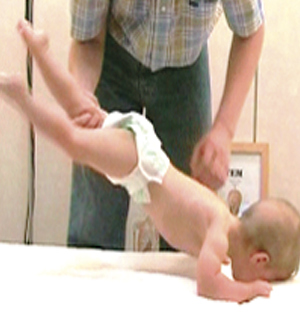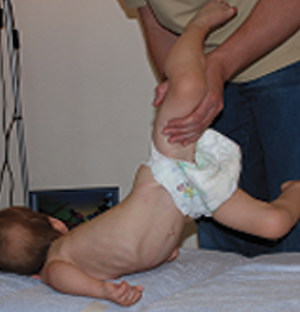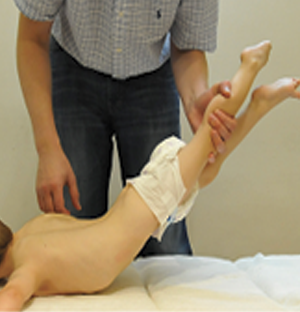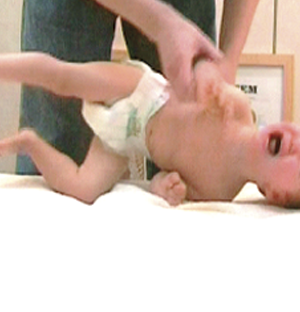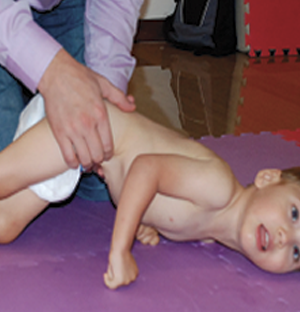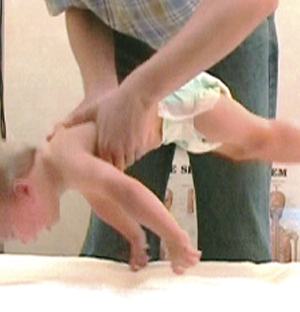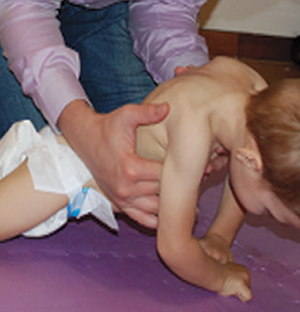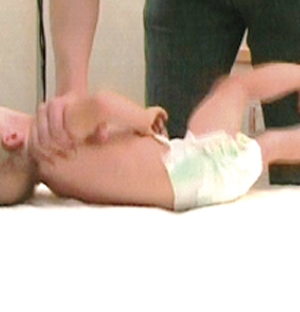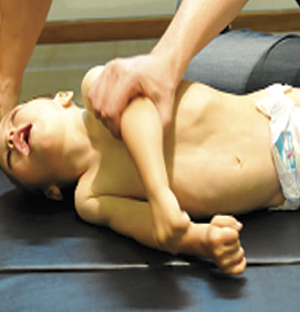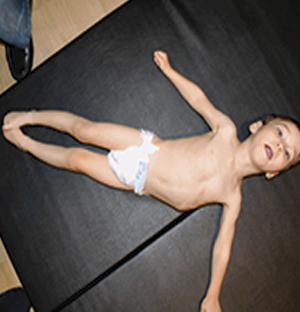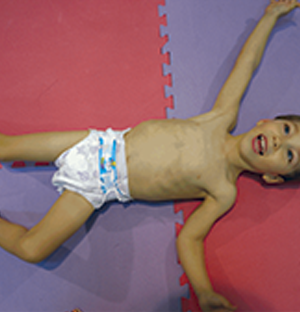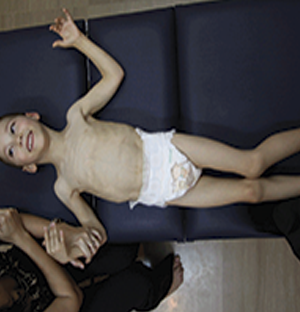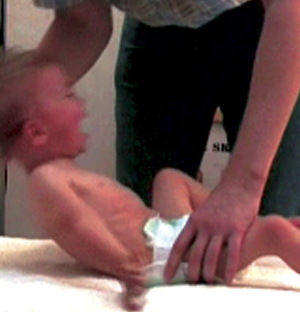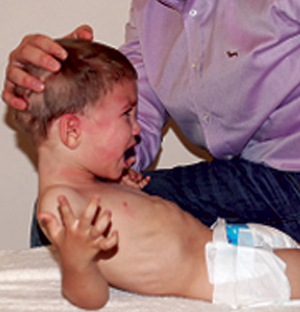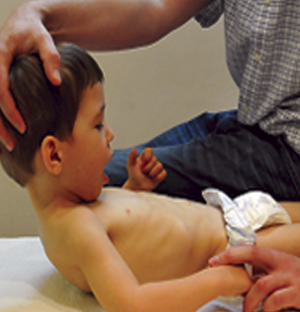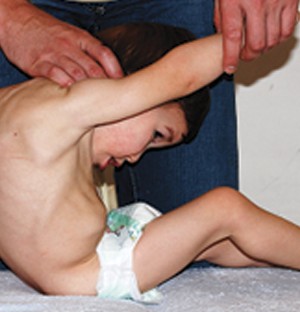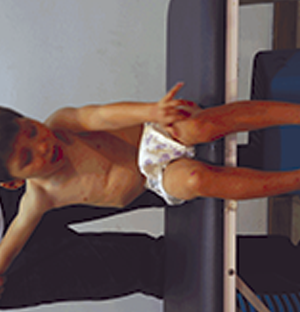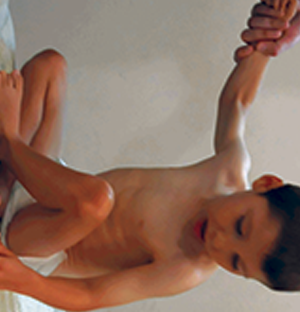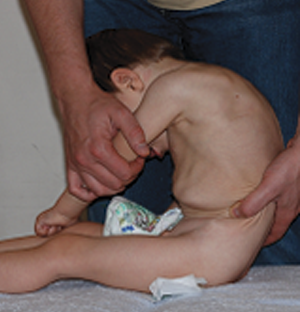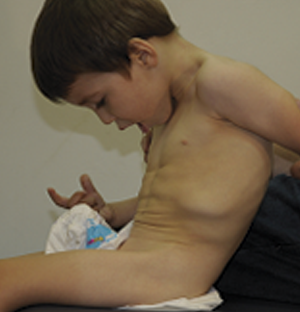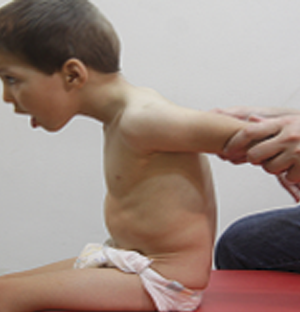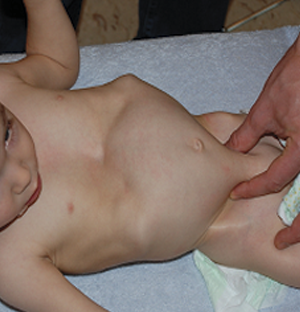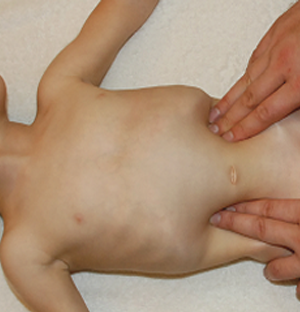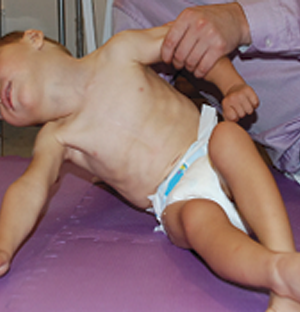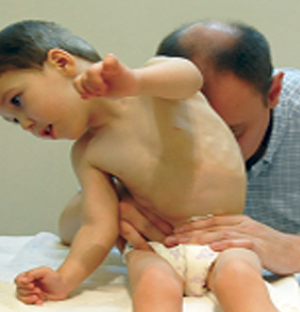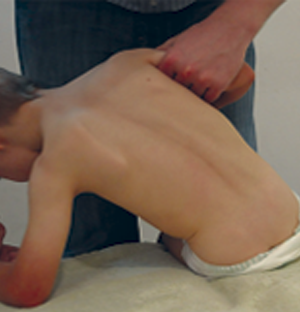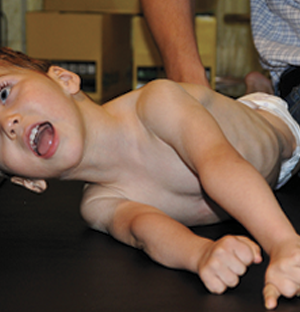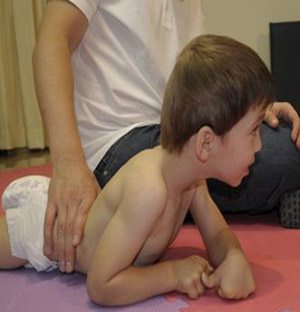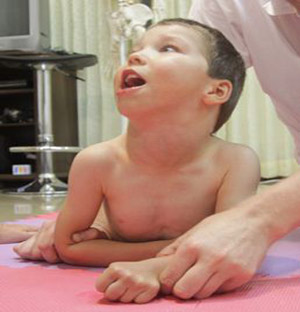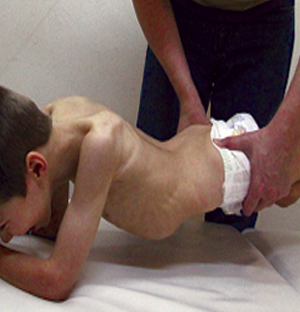I have a quadriplegic Cerebral Palsy son and we have gone through many different therapies. I posted a testimony for a physiotherapy specified to help my son in crawling in a support group when a mother commented “will he be able to crawl if he does not have proper body structure?”. This happened when my son was one years old. I was stumped by the question posted, but found logic in what she said. I decided to go on, further researching. A friend introduced me to a couple whose child was under the ABR program and they shared their experience with ABR with me. A few months later, my son and I flew over to visit the Singapore ABR Asia Centre. Leonid gave an assessment of my son’s physical abilities and helped me understand my son’s condition better. He gave me a full run-down of what my son was then capable of doing and what exercises were going to benefit him, explaining everything clearly for me to understand.
We started ABR nine years ago, and back then we only had the 3Q method. Now the therapy methods have evolved and the variety has expanded. And this in turn accelerated the efficiency of the ABR method significantly. ABR is never stagnant, which is one of the reasons why I like ABR so much. They’re always in constant search for revolutionary methods, and as a result we are always learning newer and more efficient exercises.
ABR will continuously improve my son’s quality of life. Especially when the exercises are performed at home, we can plan our daily exercises and hours based on our own schedules, without having to travel to the therapist and back. On top of that, the ABR exercises can also be done on-the-go, so when we travel overseas, therapy can still be done. We also rely a lot on the ABR machine at night, to do therapy on my son while we sleep- so time isn’t wasted, really.
Based on the GMFCS curve, my son is a level 5 Cerebral Palsy child. A level five child would typically be unable to walk, face the issue of scoliosis, hip subluxation or dislocation in general. On top of that, his body structure, posture and activities will degenerate during the phase of puberty.
What impacted me the most was how a GFMCS level 5 child, after 6 years of age, will detain the ability to progress any further, to the extent of even regressing. However, even after reaching the age of 9 years old, my son kept making steady progress. That, for me, is really a wonderful thing.
All these progress did not happen overnight- we really put in a lot of time and effort in his exercises, and the new exercises are efficient and improvements happen faster. Although the financial burden isn’t low, we get all it’s worth of hours of therapy out of it.
-Merridy
Some pictures showing progress of the child in the last few years:
Reduction of rigidity
|
|
|
|
|
July 06 The head, entire trunk and legs are rigid like a single block |
Mar 07 Reduced rigidity – legs are bent, trunk pivots at lower ribs. |
Mar 08 Further reduction of rigidity |
|
|
|
|
July 06 Turning the trunk bring stiff legs way up |
July 07 Turning the trunk by the hip does not make the legs fly so high up |
|
|
|
|
July 06 Head, trunk, arms and legs are stiff and move as one black. Not how high the legs fly and how stiff they are. |
July 07 head, trunk, arms and legs begin to act separately instead of being stiff and fused together |
|
|
|
|
July 06 Bringing arm across bring the legs flying way up high and stiff defying gravity. |
Mar 08 Legs no longer stiff defying gravity and flying high |
Reduction in involuntary movements – this is important because involuntary movements wastes energy.
|
|
|
|
|
Mar 08 Thomas involuntary movement Mar08 GIF Constant movement of head and large movement of stiff arms and stiff legs |
Nov 08 Thomas involuntary movement Nov08 GIF Still constant movements of head arms and legs but no longer do they move together as one block, and the arms and legs are bent with much smaller movements. |
Nov 11 Thomas involuntary movement Nov11 GIF Reduced both frequency and intensity of involuntary movements, which are more local and selective. |
Improved head forward mobility – In July 2006, bringing the head forward initially lifts the entire trunk with the arms. The entire movement pivots all the way down to the hip. As the head mobility improves in July 2007 and Mar 2008, the pivot of movement starts moving towards the neck and it is much easier to bring the head forward and the head no longer stuck as before. The neck region should be the source of our head movement. As his head mobility improves, he is more relaxed with this test and the arms do not go into paradoxical reaction (Arms moves in the opposite of the head).
|
|
|
|
|
July 06 |
July 07 |
Mar 08 |
Improved sitting performance – stronger trunk and better head mobility.
|
|
|
|
|
Mar 07 Unable to cross the legs. Need maximum external support for the position. |
Nov 08 Thomas sitting Nov08 GIF Much reduced external support. But still lose position once he pushes his head backwards. |
July 10 Thomas sitting July10 GIF Able to fold the legs (though not completely). Able to recover position when he is off the central axial support. Use very little effort for the position and able to focus on other activities such as interaction with surroundings. This increased repertoire is what we are ultimately looking for. |
Improved waistline (space between the ribcage and pelvis) – This is critical for the child’s ability to balance. Without the space, the child has not natural ability to balance and will have no choice but to rely on other compensation measures such as excessive movement of the legs (if he is standing) or external support or self-hand support.
|
|
|
|
|
Mar 07 Limited space between the Ribcage and the pelvis |
Nov 08 Much improved space between the ribcage and the pelvis |
June 09 Stronger trunk and sitting position |
Improved abdominal tone and volume: Sufficient volume and tone of abdomen is essential in sitting.
|
|
|
|
Mar 07 Actual abdomen is very little (the portion between the fingers pinched) |
July 07 Much improved actual abdominal volume |
Improved lateral arm weight bearing: Lateral protective arm reaction is instinctive when the child is brought to the side. The arm should be able to reach out and bear the body weight on his elbow.
|
|
|
|
|
July 07 Unable to bend elbow for weight Bearing |
Mar 08 Arm no longer fully extended. But still has problem with weight Bearing. |
July 10 Elbow bear weight fully |
Improved arm weight in prone position
|
|
|
|
Mar 08 Unable to bear weight with elbow. Unable to bend arm and arm stays extended at all time. |
Nov 08 Thomas WB Prone Nov08 GIF Able to bear weight with much efforts. Looks concerned and full of focus |
|
|
|
|
Jun 09 Thomas WB Prone Jun09 GIF A lot more relaxed in his weighted bearing. Able to focus more on the social interaction with the surrounding. |
July 13
|




